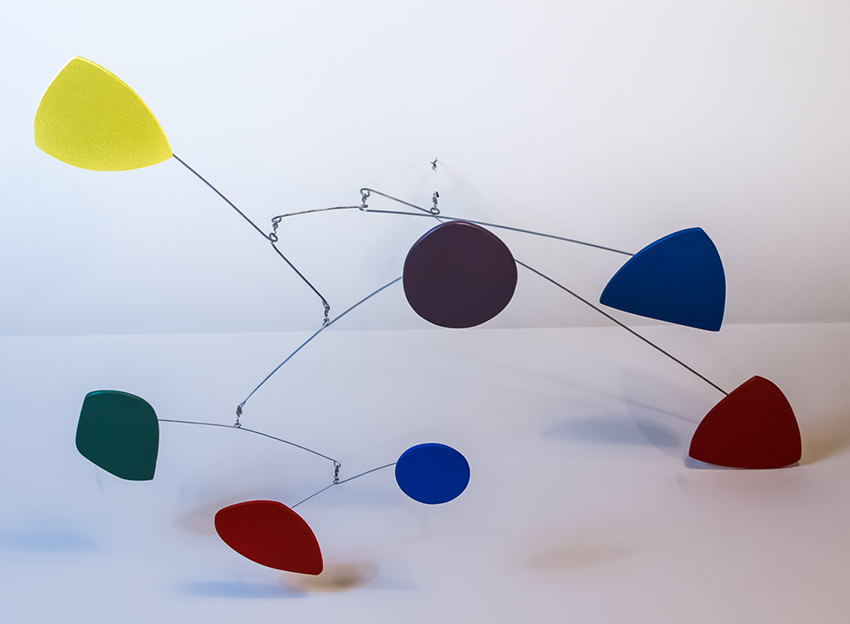 Schmitt Design is the mobile and furnishing company of Brian Schmitt. Brian started his company making mobiles primarily, but has since branched out into other products related to home furnishing, including lamps and furniture. His mobiles, which are beautifully crafted out of bamboo, are designed to move gracefully through the air with the individual pieces moving entirely independently (or almost) of each other. This is something that is different from many mobile designs which tend to sculpt a basic shape in space within which there is some freedom of movement. But, as I see it, in Brian’s bamboo mobiles, the overall shape is less defined, but you get a nearly infinite set of relationships among the individual pieces as each is free to rotate 360 degrees in space while the piece above, below or across from it is also moving through 360 degrees. One could view these mobiles from underneath and, assuming there was some air movement in the room, see an endless variety of constantly changing patterns.
Schmitt Design is the mobile and furnishing company of Brian Schmitt. Brian started his company making mobiles primarily, but has since branched out into other products related to home furnishing, including lamps and furniture. His mobiles, which are beautifully crafted out of bamboo, are designed to move gracefully through the air with the individual pieces moving entirely independently (or almost) of each other. This is something that is different from many mobile designs which tend to sculpt a basic shape in space within which there is some freedom of movement. But, as I see it, in Brian’s bamboo mobiles, the overall shape is less defined, but you get a nearly infinite set of relationships among the individual pieces as each is free to rotate 360 degrees in space while the piece above, below or across from it is also moving through 360 degrees. One could view these mobiles from underneath and, assuming there was some air movement in the room, see an endless variety of constantly changing patterns.
 This character, or perhaps we can call it behavior, is what attracted me to making mobiles in the first place. Though I love Alexander Calder and find his work inspirational, most of his mobile creations are built so that the individual pieces flexibly move together, not independently of each other. Here, on the left, for example is a simple mobile I did a few days ago to test some ideas.
This character, or perhaps we can call it behavior, is what attracted me to making mobiles in the first place. Though I love Alexander Calder and find his work inspirational, most of his mobile creations are built so that the individual pieces flexibly move together, not independently of each other. Here, on the left, for example is a simple mobile I did a few days ago to test some ideas.
Each of the pieces can rotate mostly independent from the other pieces, although in this case, since they are all joined by the same nylon line, the movements affect each other; another effect I find engaging.
For more on Brian and Schmitt Design, take a look at this video:
behind the scenes with Brian Schmitt from Brian Schmitt on Vimeo.















You must be logged in to post a comment.